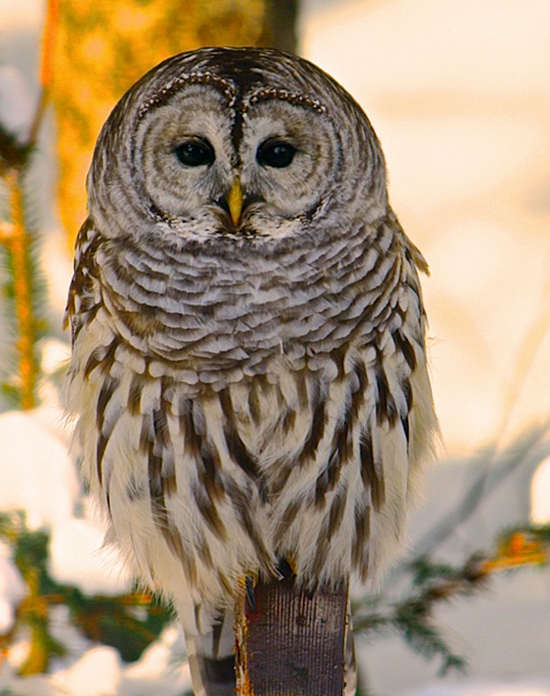
By Lisa Loomis
Does it seem like people are seeing (and photographing) more owls than usual this year? The Valley Reporter thought so and sought out Vermont Fish & Wildlife biologist John Buck for some answers.
Contrary to popular belief, Buck said, owls regularly hunt during the day although they are excellent nighttime hunters. In the winter they can hear mice and voles and other subnivean creatures that live under the snow and create tunnels for movement.
Owls can hear the subnivean creatures (mammals such as foxes and mink can smell them under the snow) and will dive from on-high, plunging into the snow and emerging with food in their talons or beak.
"When the snow is at a normal depth, it is easier for owls and other predators to hear and smell their prey. With two to three feet of snow in the woods, it may be more difficult for owls to detect mice and voles and so they are roaming beyond their normal haunts in search of food," Buck said.
"Many of us have seen evidence of owls hunting, with the wing marks in the snow. I saw a barred owl fall out of a tree with its talons open and emerge with a mouse," he said.
Fayston resident Andy Yager (whose pictures appear on this page) also has stunning pictures of a similar event at his house. Scroll through Andy Yager's images below, or click on the images below to see full size
{module[387]}
{module[388]}
In addition to a long winter, the rise in smartphone ownership means that people almost always have a camera with them that is capable of still and video photography.
"The smartphone has been revolutionary. People are capturing wildlife in ways that have never been done before," said Buck, who is the nongame bird project leader for the Vermont Fish & Wildlife Department.
Barred owls are the most common owl in northern New England forests. The state doesn't keep track of their population, but Buck said, "We do surveys at different intervals for breeding sites and homes."
Owls mate in the winter and are sitting on their eggs right now. The owlets should be hatching right now, Buck said. Unlike most birds, both the male and female sit on the eggs and both parents take care of them.
Their preferred nesting areas are in the hollows of trees and stumps. They avoid being out in the open.
Owls don't play well with other owls, Buck said, and they tend to live by themselves in pretty much the same area all year-round. There is some territoriality in their behavior, he added, noting that their territory might encompass about a square mile.
(See full photo gallery at www.valleyreporter.com and www.facebook.com/TheValleyReporter.)






